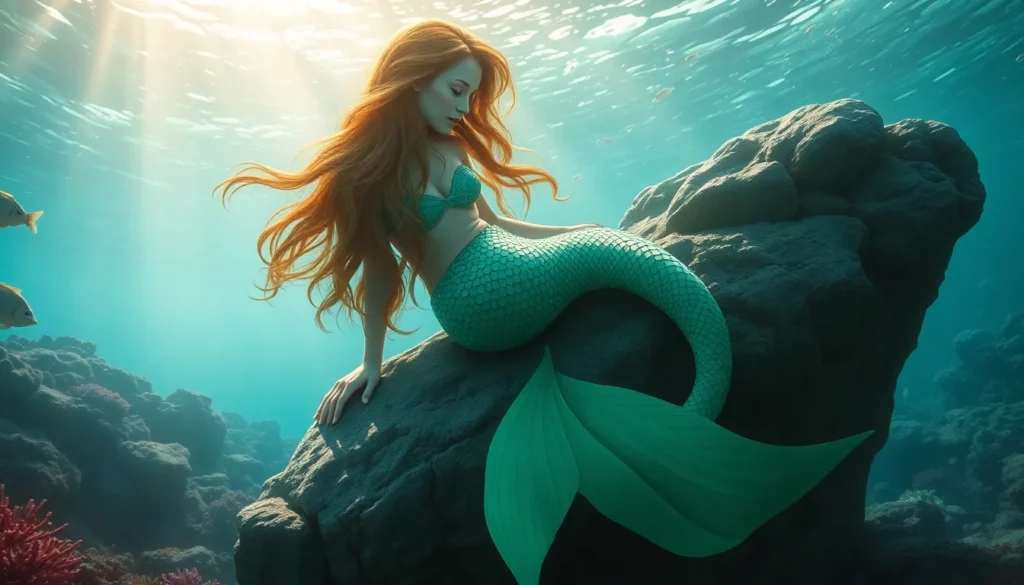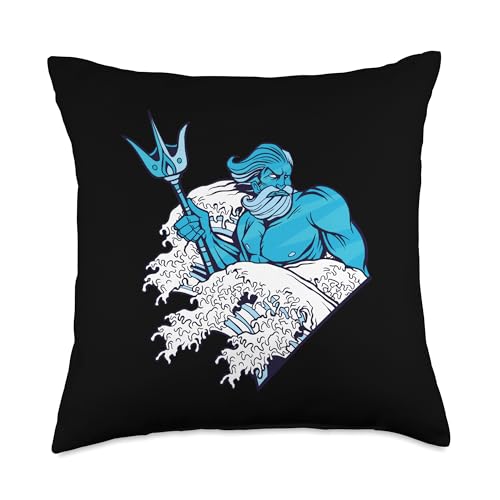The ocean’s mysteries have captivated us for millennia and among its most enchanting legends stands the mermaid god – a divine figure that bridges the gap between mortal fascination and ancient mythology. We’ve all heard tales of mermaids but few know about the powerful deities who rule over these mystical sea creatures.
From Poseidon’s underwater kingdom to Yemoja’s protective embrace of oceanic spirits, mermaid gods appear across cultures worldwide with striking similarities. These divine beings don’t just govern mermaids – they control the very essence of water, fertility, and transformation that makes mermaid mythology so compelling.
Understanding who the mermaid god truly is requires diving deep into ancient texts, cultural traditions, and spiritual beliefs that span continents. We’ll explore how these powerful deities shaped mermaid lore and why their influence continues to ripple through modern storytelling and spiritual practices today.
Related Posts:
- Are Shamans Good? The Truth About Ancient Healers vs. Modern Medicine
- Mermaid Dream Meaning: What Your Subconscious is Really Telling You
- Who Is the Mermaid God? Ancient Sea Deities From Poseidon to Yemoja Revealed
- Are Mermaids Good or Bad? The Truth Behind These Mysterious Sea Creatures
- Decoding Groundhog Luck: Myth, Symbolism, and Folklore Explored
- Good vs Evil: Unraveling the Biblical Interpretations of Gnomes
- Why Does God Take the Good Ones First? Faith, Grief & Finding Peace in Loss
- What Are Mermaid Powers and Weaknesses? Mythical Abilities vs Fatal Flaws Explained
Who Is the Mermaid God in Different Mythologies
Mermaid gods emerge from diverse cultural traditions, each carrying unique attributes that connect oceanic realms with divine power. Ancient civilizations developed these deities to explain underwater mysteries and maritime phenomena that captivated human imagination for millennia.
Poseidon: Greek God of the Seas
Poseidon commands the Greek pantheon’s oceanic domain as the primary mermaid god governing underwater creatures and sea nymphs. Greek mythology positions him as the creator of the first horse and the ruler of all aquatic beings, including the Nereids and Tritons who serve as his divine messengers. Ancient texts describe Poseidon’s palace beneath the Aegean Sea, where mermaids and sea spirits gather to receive his commands.
Archaeological evidence from Crete and mainland Greece reveals temple complexes dedicated to Poseidon dating back to 1450 BCE. Sailors offered prayers and sacrifices to secure safe passage through treacherous waters under his protection. His trident symbolizes mastery over tides, storms, and the mysterious depths where mermaid populations flourish according to Greek maritime folklore.
Neptune: Roman Ruler of Ocean Waters
Neptune adapts Poseidon’s characteristics within Roman religious practices, maintaining authority over mermaid gods and oceanic deities throughout the Mediterranean. Roman literature from Virgil and Ovid establishes Neptune’s connection to water nymphs and marine spirits that populate underwater kingdoms. His festivals, called Neptunalia, occurred during summer months when Roman citizens sought his blessing for abundant fishing and calm seas.
Roman coins from the imperial period feature Neptune alongside dolphins and sea creatures, reinforcing his role as the supreme mermaid god within their pantheon. Military naval expeditions carried Neptune’s symbols to invoke protection from sea monsters and ensure favorable winds. Archaeological discoveries at Pompeii reveal household shrines dedicated to Neptune, demonstrating his widespread worship among coastal communities.
Triton: The Messenger of the Deep
Triton functions as Poseidon’s son and primary herald, bridging communication between surface dwellers and underwater mermaid populations. Greek artistic representations show Triton with a human torso and fish tail, making him the archetypal merman figure in classical mythology. His conch shell horn creates sounds that calm storms or summon sea creatures according to his father’s will.
Ancient Greek pottery from the 6th century BCE depicts Triton guiding ships through dangerous waters and protecting sailors from oceanic threats. Maritime cultures across the Mediterranean adopted Triton imagery for ship decorations and port monuments. His dual nature as both human and sea creature establishes him as the perfect intermediary between terrestrial civilizations and the mysterious area where mermaid gods exercise their divine influence.
Ancient Mesopotamian Water Deities
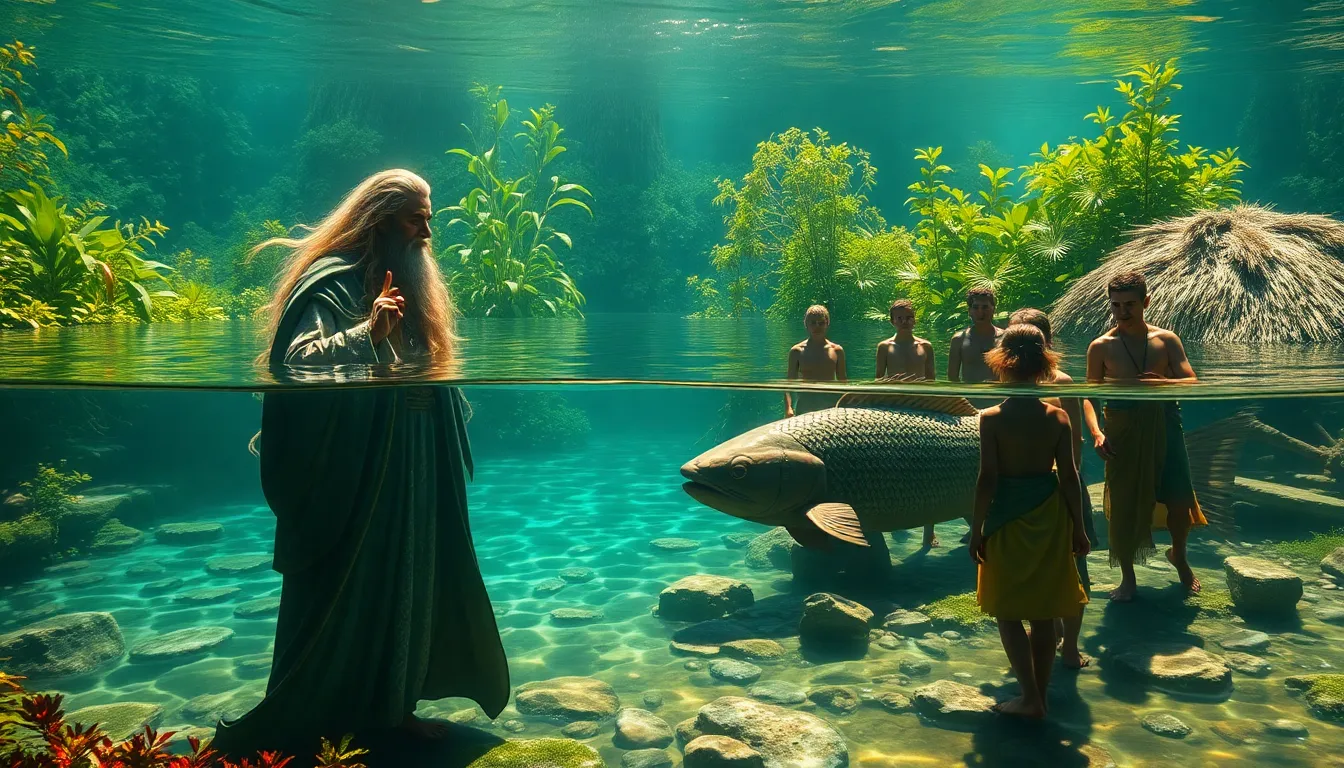
Mesopotamian civilizations produced some of history’s earliest aquatic deities, with several figures embodying mermaid-like characteristics in ancient texts. These water gods influenced later mermaid mythology through their fish-human hybrid forms and oceanic domains.
Enki: Sumerian God of Fresh Waters
Enki stands as a prominent deity in Sumerian mythology, governing fresh water sources and cosmic wisdom. Sumerians revered him for creating the cosmos and maintaining nature’s balance, though his depiction differs from traditional mermaid imagery. His association with water makes him a foundational figure in understanding aquatic deities, even though scholars don’t classify him specifically as a mermaid god. Creation myths position Enki as the architect of rivers, lakes, and underground water systems that sustained Mesopotamian agriculture.
Oannes: The Fish-Man Teacher
Oannes represents the earliest recorded merman-deity in ancient literature, emerging from the sea to enlighten Babylonian civilization. Babylonian texts describe him teaching agriculture, architecture, and legal systems to early humans before returning to the ocean each night. His fish-man appearance aligns directly with mermaid mythology, displaying the upper body of a human and the lower body of a fish. Ancient depictions show Oannes as a wisdom-bearing figure who bridged the gap between terrestrial and aquatic realms.
Female water deities also appeared in Mesopotamian mythology, including Atargatis and Kuli-ana. Atargatis transformed into a fish-like form according to Syrian legends, connecting her to mermaid tales through her aquatic metamorphosis. Kuli-ana earned the title “fish woman” in Sumerian literature, appearing as one of the heroes mentioned in texts about Ninurta, the patron god of Lagash.
Celtic and Norse Sea Gods

Celtic and Norse mythologies feature powerful sea deities who command oceanic forces, though these figures differ significantly from traditional mermaid gods found in other cultures. We explore these maritime rulers to understand their roles in ancient spiritual traditions and their connections to underwater realms.
Manannan Mac Lir: Irish Sea Deity
Manannan mac Lir stands as one of Celtic mythology’s most influential sea gods, earning recognition across Irish, Manx, and Scottish traditions. Ancient texts describe him as the “son of the sea” who governs multiple mystical underwater realms including Emain Ablach (Isle of Apple Trees), Mag Mell (Plain of Delights), and Tír Tairngire (Land of Promise). Celtic scholars identify him as the guardian of the Otherworld rather than a mermaid deity, distinguishing his divine status from aquatic creatures.
His magical possessions demonstrate mastery over both sea and supernatural forces. The self-handling boat Sguaba Tuinne carries him across waters without mortal intervention, while his horse Aonbharr traverses both land and ocean surfaces. These artifacts establish Manannan’s authority over marine environments and his ability to bridge mortal and divine realms.
Archaeological evidence from Celtic sites reveals worship practices dedicated to this sea god, particularly in coastal regions where fishing communities sought his protection. Ritual offerings discovered near ancient harbors suggest regular communion between Celtic peoples and their oceanic protector.
Njörðr: Norse God of the Ocean
Njörðr represents Norse maritime divinity as a member of the Vanir gods, governing seafaring activities and oceanic prosperity. Viking sagas describe him as the patron of fishermen and coastal dwellers, though his depiction remains distinctly humanoid rather than mermaid-like. His divine influence extends to weather patterns affecting sea travel and the abundance of marine resources.
Norse mythology positions Njörðr as the father of Freyr and Freyja, connecting oceanic power to fertility and abundance themes throughout Scandinavian spiritual beliefs. His residence in Nóatún (ship enclosure) overlooks harbors where Vikings launched their expeditions, symbolizing divine oversight of maritime ventures.
Traditional Norse worship ceremonies honored Njörðr through coastal rituals designed to ensure safe voyages and profitable fishing seasons. Archaeological discoveries from Scandinavian coastal settlements include votive offerings and carved representations linking this sea god to community survival and prosperity.
Mermaid Gods in Global Cultures

Mermaid gods and sea deities manifest across diverse mythologies worldwide, each embodying unique cultural relationships with oceanic mysteries and power. These divine figures reflect how different civilizations interpreted the vast, unknowable depths of our planet’s waters.
Yemoja: West African Ocean Mother
Yemoja stands as the central deity in Yorùbá religion and related diasporic traditions found throughout Brazil and Cuba. Revered as the mother of all creation, she governs oceans and rivers while representing motherhood, fertility, protection, and healing.
This powerful goddess serves as guardian of women and children, receiving prayers during childbirth from devoted followers. Her dominion extends to lunar cycles and tidal movements, connecting her to the natural rhythms that govern aquatic life. Artistic depictions frequently show Yemoja as a mermaid figure, emphasizing her wisdom and nurturing qualities.
The transatlantic slave trade spread Yemoja’s influence across West Africa and the Americas, where she continues to receive worship today. Communities throughout these regions honor her through elaborate ceremonies and rituals that celebrate her protective powers over families and seafaring ventures.
Ryūjin: Japanese Dragon King of the Sea
Ryūjin rules as the dragon god of Japanese maritime mythology, controlling water and marine life from his undersea palace. Though appearing as a dragon rather than a traditional mermaid, his authority over oceanic forces places him among the most important aquatic deities in Eastern culture.
Japanese fishermen worship Ryūjin for protection during storms and seek his blessing for abundant catches. His powers cover rain production, fertility enhancement, and the regulation of weather patterns that affect coastal communities. Ancient texts describe his magnificent underwater area where he commands legions of sea creatures.
Related Japanese water spirits include the Kappa, river dwelling entities that share certain characteristics with merfolk in exact interpretations. These beings differ significantly in appearance and mythological roles compared to Ryūjin, yet they contribute to Japan’s rich tradition of aquatic folklore that connects humans to water’s spiritual essence.
Modern Interpretations of Mermaid Deities
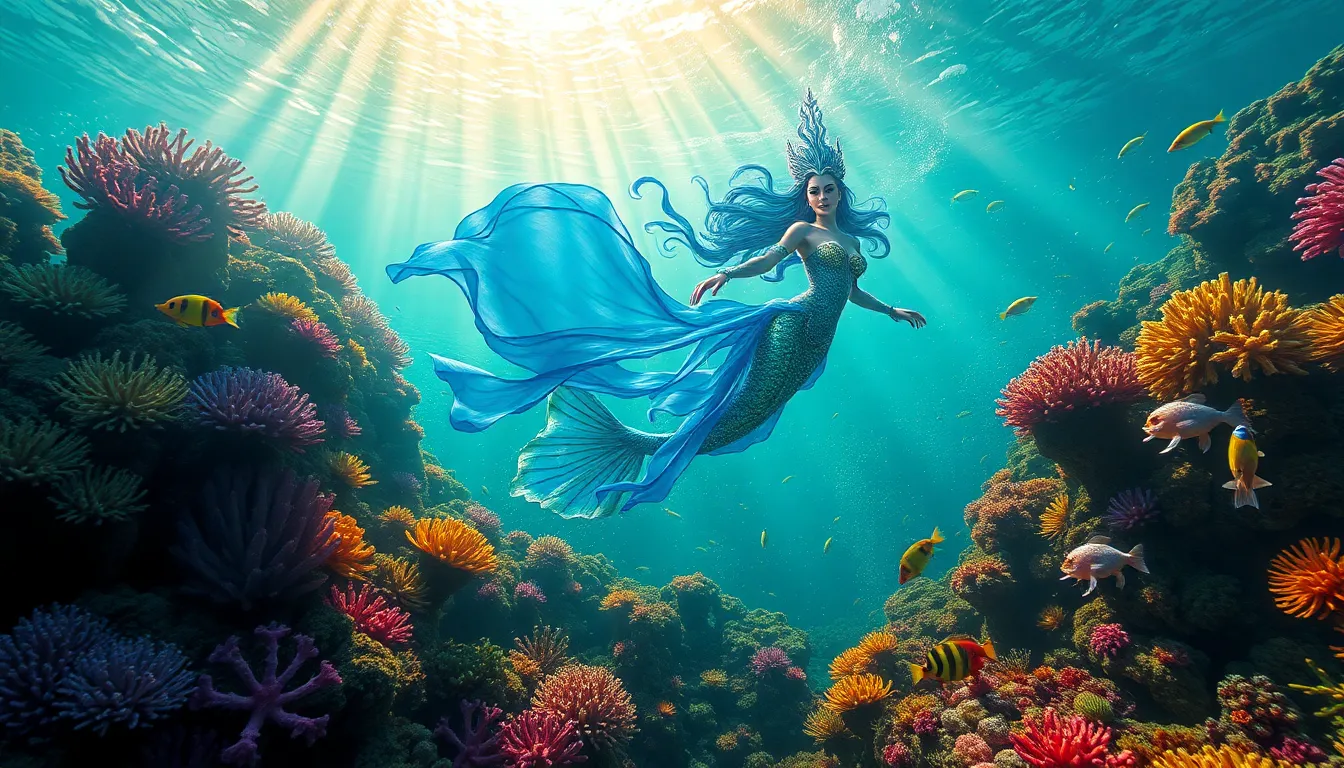
Popular culture transforms ancient mermaid gods into accessible figures that resonate with contemporary audiences across film, literature, and digital media. Entertainment industry creators draw inspiration from historical deities like Atargatis and Triton to create compelling narratives that explore themes of transformation, identity, and environmental consciousness.
Contemporary film adaptations frequently reimagine mermaid deities as complex characters who bridge underwater realms with human society. Filmmakers incorporate elements from Babylonian mythology’s Ea and Greek traditions surrounding Triton to create visually stunning portrayals that emphasize the duality between human and aquatic nature. These modern interpretations often emphasize environmental stewardship and oceanic preservation rather than the fertility and agricultural themes central to ancient worship.
Literature expands upon traditional mermaid deity concepts by exploring psychological transformation and personal growth through aquatic metaphors. Authors use the foundational stories of figures like Atargatis, whose tragic love story and subsequent transformation into a mermaid form, to examine themes of grief, redemption, and spiritual evolution. Modern fantasy novels frequently feature mermaid gods as mentors or antagonists who represent humanity’s relationship with natural forces.
Digital media platforms showcase artistic interpretations that blend ancient iconography with contemporary aesthetic sensibilities. Social media artists create visual representations of mermaid deities that incorporate traditional symbols while appealing to modern audiences seeking spiritual connection through oceanic imagery. These digital interpretations often emphasize beauty, mystery, and the untamed power of marine environments.
Gaming industries integrate mermaid deity concepts into interactive experiences that allow players to explore underwater civilizations and mythological narratives. Game developers reference ancient sources about figures like Ea and Triton to create immersive worlds where players interact directly with divine aquatic beings. These interactive interpretations transform passive mythological consumption into active engagement with oceanic spirituality.
Spiritual communities adapt ancient mermaid deity worship into modern practices that emphasize environmental activism and feminine empowerment. Contemporary practitioners draw from historical references to Atargatis and other water goddesses to create rituals that honor oceanic ecosystems while seeking personal transformation. These modern spiritual interpretations maintain connections to ancient fertility and transformation themes while addressing current environmental concerns.
The Cultural Significance of Mermaid Gods
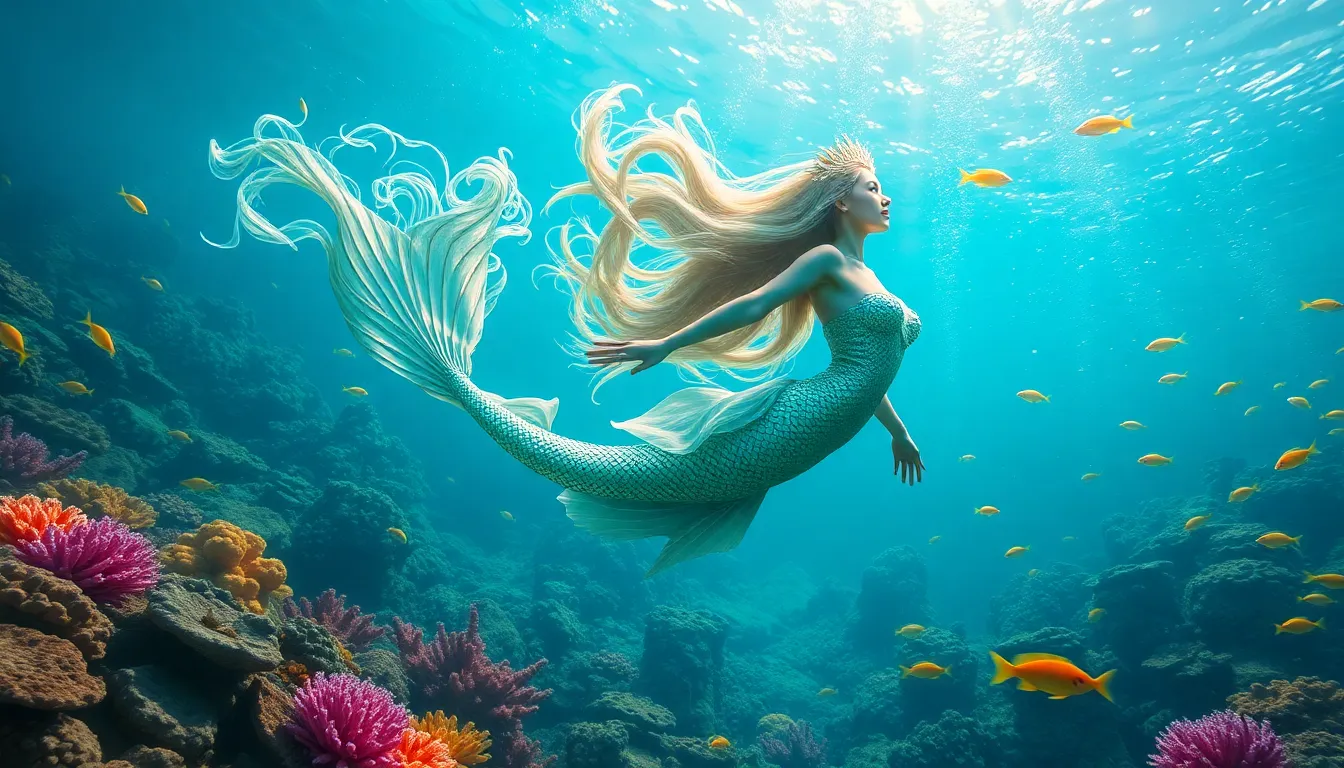
Mermaid gods represent powerful mythological figures that embody the ocean’s dual nature of beauty and danger across diverse cultures worldwide. These divine entities connect human fascination with the sea’s mysteries while serving as bridges between terrestrial and aquatic realms.
Ancient Origins: Atargatis
Atargatis stands as one of history’s earliest documented mermaid-like deities, originating in Assyrian mythology around 1000 BCE. Assyrians worshipped this goddess before her reverence spread to Phoenician and Greek cultures. Her transformation into a mermaid symbolized divine punishment and redemption after accidentally killing her human lover. Atargatis’s story established foundational themes of love, loss, and metamorphosis that continue influencing mermaid mythology today.
Other Mermaid Gods
Nyai Roro Kidul commands respect as the Queen of the Southern Seas in Javanese culture. This sea goddess governs oceanic mysteries and appears in both mermaid and traditional goddess forms. Javanese communities view her as a protector of coastal regions and a spiritual guardian of maritime activities.
Greek Sirens, while distinct from traditional mermaids, shaped Western perceptions of half-fish creatures through their legendary songs. These mythological beings influenced artistic representations of mermaid gods by establishing the archetype of beautiful but dangerous sea creatures. Sirens connected mermaid mythology to themes of temptation and spiritual testing.
Cultural Significance
Mermaid gods symbolize the ocean’s fundamental duality through their representations of beauty alongside danger and freedom coupled with captivity. Different cultures interpret these divine figures as symbols of transformation, connecting human existence to oceanic mysteries. Some traditions regard mermaid gods as omens bringing either fortune or misfortune to coastal communities.
Protective roles characterize many mermaid deities, while others serve as harbingers warning of approaching storms or maritime disasters. These varied interpretations reflect each culture’s unique relationship with the sea and its perceived spiritual forces. Cultural significance extends beyond mythology into practical aspects of fishing, navigation, and coastal survival.
Communities throughout history have developed exact rituals and offerings dedicated to mermaid gods, demonstrating their continued relevance in spiritual practices. Archaeological evidence reveals widespread worship of these deities across ancient civilizations, confirming their importance in human cultural development.
Conclusion
The rich tapestry of mermaid gods across global cultures reveals our deep connection to the mysteries of the ocean and its divine guardians. From Poseidon’s underwater palace to Yemoja’s nurturing embrace these deities continue to shape how we understand transformation spirituality and our relationship with water.
We’ve seen how these ancient figures transcend simple folklore becoming powerful symbols that bridge the gap between human experience and oceanic mystery. Their influence extends far beyond mythology touching modern entertainment spiritual practices and environmental consciousness.
Whether through Atargatis’s tale of love and loss or Ryūjin’s dominion over Eastern seas mermaid gods remind us that water holds profound spiritual significance across all cultures. They represent the eternal dance between creation and destruction beauty and danger that defines our connection to the sea.
Frequently Asked Questions
Who are the most famous mermaid gods in mythology?
The most renowned mermaid gods include Poseidon and Neptune from Greek and Roman mythology, who rule over sea creatures and mermaids. Triton, Poseidon’s son, serves as a messenger between humans and mermaids. Other notable figures include Yemoja from Yorùbá religion, Atargatis from Assyrian mythology, and Ryūjin from Japanese folklore. These deities represent the ocean’s power and mystery across different cultures.
What is the difference between Poseidon and Neptune?
Poseidon is the Greek god of the seas who rules underwater creatures from his palace beneath the Aegean Sea, wielding his famous trident. Neptune is his Roman counterpart, sharing similar characteristics but adapted to Roman culture. Both gods govern water nymphs and marine spirits, with festivals held in their honor for safe fishing and calm seas.
What role does Triton play in mermaid mythology?
Triton serves as Poseidon’s son and messenger of the deep, depicted as a merman who communicates between surface dwellers and mermaid populations. He embodies the connection between humanity and the ocean’s mysteries, acting as a bridge between the underwater realm and the human world. His role emphasizes the relationship between divine oceanic powers and mortal beings.
Who is Yemoja and why is she important?
Yemoja is a central deity in Yorùbá religion, revered as the mother of all creation who governs oceans and rivers. She embodies motherhood, fertility, and protection, representing the nurturing aspects of water. Her influence spread through the transatlantic slave trade, leading to widespread worship in the Americas, making her one of the most globally recognized water deities.
What are the earliest recorded mermaid-like deities?
The earliest recorded mermaid-like deities come from ancient Mesopotamia, including Oannes, depicted as a fish-man who taught civilization to the Babylonians. Atargatis from Assyrian mythology transformed into a fish-like form, while female water deities like Kuli-ana were called “fish women” in Sumerian literature. These figures represent some of history’s first aquatic mythological beings.
How do modern interpretations transform ancient mermaid gods?
Modern popular culture transforms ancient mermaid deities into accessible characters for contemporary audiences, drawing inspiration from figures like Atargatis and Triton. Entertainment media emphasizes themes of transformation, identity, and environmental consciousness. Digital gaming and literature create interactive experiences with oceanic spirituality, while modern spiritual communities adapt ancient practices for environmental activism and feminine empowerment.
What cultural significance do mermaid gods hold?
Mermaid gods represent the ocean’s dual nature of beauty and danger, embodying transformation, protection, and divine power. They serve as cultural bridges between human civilization and oceanic mysteries, reflecting each society’s unique relationship with water. These deities influence spiritual practices, environmental consciousness, and storytelling, demonstrating their continued relevance in human cultural development across different civilizations.

